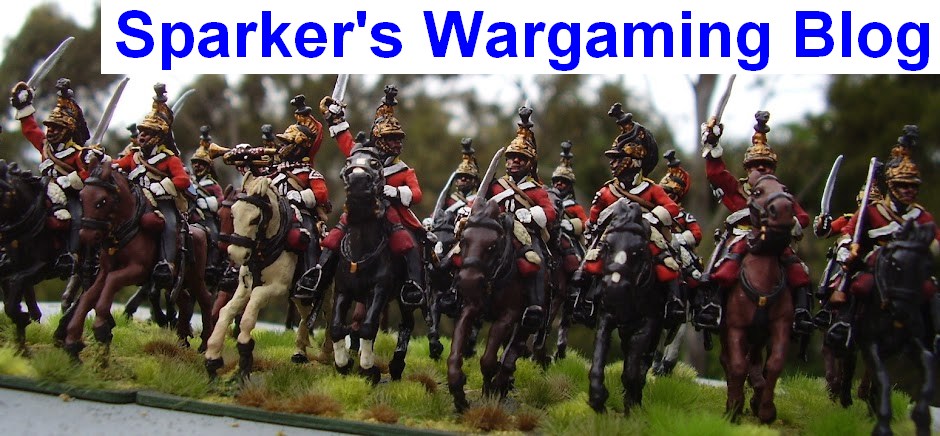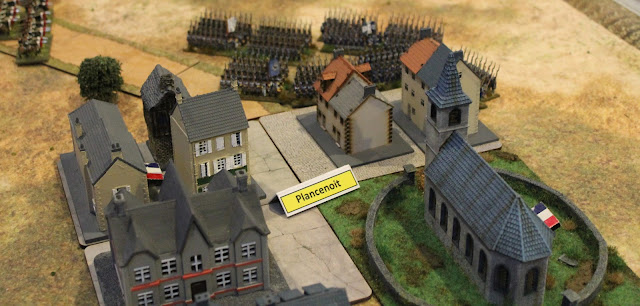This week the Wollongong Wargamers revisited the Battle of Kursk, northern salient. Ed, below left, actually volunteered for the challenge of being the Russian player! Peter joined me on the German side. We had six moves to take an objective...
 |
| Looking NNE over Ponyri toward the German startline |
 |
| Looking NW - red dice show objective areas and Red deployment area. |
Peter came up with a cunning plan. He would take the Ferdinands and SIG33s Brummbars and go right flanking. I would go left with the infantry and STuGs via State Farm July 1st.
Ed probably suspected we would try take the covered approach through the cropfields. Anyway his T-34s were massed in the vicinity of the State Farm, crammed into the woods around Hill 253.3 (represented by the brown felt.)
My STuG company split up - the lead platoon hammered down the road through the undefended State Farm for the distant objective, the remaining platoons opened up on the T-34s.
These inexperienced Tridtsat' chetyre tankers were hit on a 2+ plus 1 for being in cover...
Three knocked out in the first salvo!
Then Peter chipped in from a field far far away with his 88mm L71s....
At this point we Germans were feeling quite confident...
And my infantry were slowly closing in on the near objective, creeping through the crop fields...
Although of course we still had the SU-152 Zvierboi to deal with...and the Red God of War had found the range to my infantry platoons and was steadily wearing them down...
Thus far neither side were having much luck with our air support rolls but then Hans Rudel showed up and was directed toward the SU-122s as these had been attriting my infantry pretty heavily...
Rudel rerolls a miss which is nice! But of four hits, all were just bails which Ed was able to roll off! Flyboys - civvies in uniform!
At this point the battle was in the balance - the Russians had lost a lot of AFVs and infantry, but their defence of the forward objective was looking strong, particularly since my infantry has suffered so much from artillery fire.
On the positive side, my point STuG platoon was deep into enemy territory and approaching the far objective...
Before the Red Air Force showed up! Once again, no harm done from the overpaid aviators!
It was a desperate fight with PTRDs firing at side armour and Molotov cocktails attacking top armour!
Finally, the German armoured onslaught was forced to Fall Back! Well done Ed for a skillful and resolute defence of Ponyri Station.























































